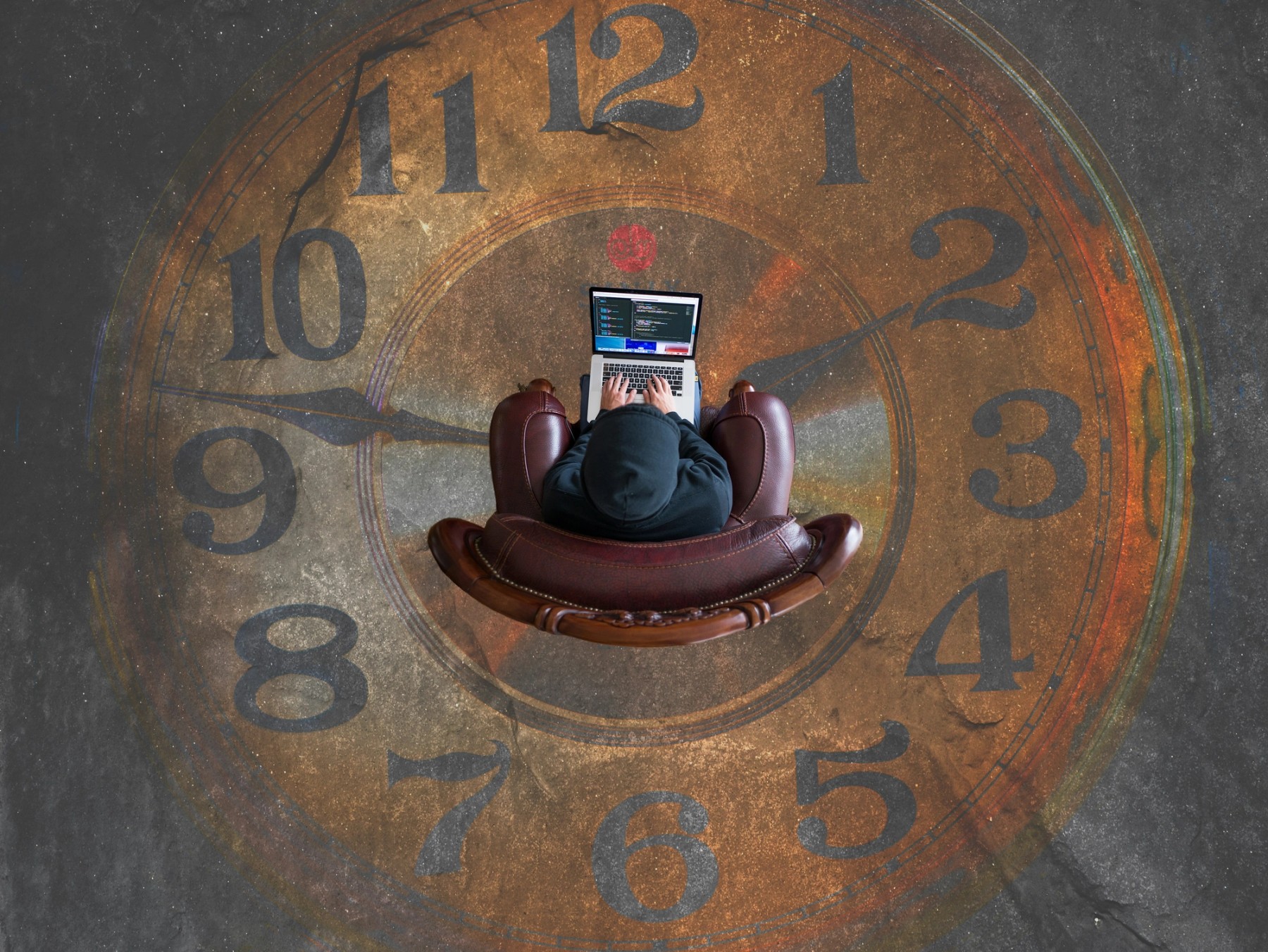
Stress at work isn’t a personal flaw; it’s a signal that load, clarity, and recovery are out of tune. Teams that last don’t “tough it out” - they design for steadiness: clear urgency ladders, honest capacity signals, micro-recovery during the day, and leaders who protect psychological safety. Treat your brain like a battery: guard green hours for deep work and stop pretending it’s still green at 22:36. Lower cognitive load with cleaner briefs and fewer “could’ve been an email” meetings. Keep stress situational, not personal: when pressure spikes, plan the peak and the cooldown. Unmanaged stress drifts toward burnout, a workplace risk, not a moral failure.

What we call “stress” at work isn’t just a busy calendar or one gnarly sprint. It’s the gap between what the job asks and the resources you actually have right now: time, control, clarity, support. When that gap widens, quality slips, tempers shorten, and your body quietly sends invoices you didn’t approve. Public health professionals refer to this as a mismatch between demands and resources; it’s not a personal failing, but rather a design problem (NIOSH overview: https://www.cdc.gov/niosh/stress/about/index.html).
Modern teams feel that a mismatch faster. Work speeds up; channels multiply. You toggle between reviews, product threads, handoffs, client pings, and a meeting that could’ve, let’s be honest, been an async brief. The brain’s bandwidth didn’t double, and late-evening choices are rarely the best ones. Add silent assumptions - “Everything is urgent,” “Everyone’s available,” “Good people don’t need recovery - and we’ve built a factory for avoidable stress.
Here’s our WIARA reframe: stress is data. It’s telemetry about the system-scope, sequencing, clarity, and the safety in the room, not a verdict on your character. Read it, and you can tune the system: make urgency explicit, lower cognitive load, protect green hours, and design the peak and the cooldown. That’s not “soft.” It’s operational hygiene with human consequences. The WHO is blunt: mental health at work depends on organizational measures as much as individual coping.

There’s also culture: psychological safety, not “be nice,” but permission to be candid under pressure without backlash. Without it, people hide blockers and sugarcoat estimates; with it, teams surface risks early and ship cleaner. Safety isn’t a mood; it’s an operating condition leaders create on purpose.
If you’re noticing the tells-short fuses in standup, sprawling threads that never land, “quick” fixes becoming tomorrow’s bugs, weekends turning into catch-up time, then you’re not looking at a motivation problem. You’re looking at a system asking for a redesign. Redesign doesn’t mean slowing down. It means sorting (what’s truly P1, what can wait 24-48 hours), clarifying (what “done” is, who owns it, by when), and recovering in small, frequent ways so people don’t arrive at Friday running on fumes. Lowering cognitive load is a big lever; clearer inputs cut errors and the “just checking in” churn. Also, meaning matters; people hold pressure better when their work and they feel like they matter.
So no, stress won’t vanish. Nor should it; healthy challenge is how we grow. But chronic stress, the kind that blurs judgment, erodes trust, and quietly burns out your best people, is optional. It’s the result of choices we can change: how we mark urgency, how we brief, how we protect focus, and how we speak to each other when the heat is on.

What follows isn’t theory. It’s a small, repeatable playbook we use with distributed teams to keep the work ambitious and the humans intact. Start anywhere; two or three moves are enough to feel the room shift. Then keep tuning. The goal isn’t a stress-free office (fiction). The goal is steady under pressure, clear, humane, and built to last.So let’s turn the lights on, enough theory; here’s what it looks like in real life. These are the moves we practice at WIARA to keep ambition high and humans intact, even when the week runs crazy.
When stress stays vague, it grows teeth. “I’m drowning” wins sympathy; “Here’s the trigger, the effect, and the fix” wins help. Treat the feeling like telemetry. You’re not admitting failure; you’re describing conditions the team can influence. That simple shift from identity to environment takes the emotional sting out and gives people something to do besides nod.

In one of the earlier sprints I witnessed, our QA lead kept saying they were “behind.”
Once the team wrote it down like a ticket, everything shifted:
Trigger: random build drops during deep work;
Effect: regressions pushed late.
Need: two fixed test windows + P1-only during those hours. The guilt disappeared, and a plan appeared. Two days later: same workload, earlier dinners. Nobody became superhuman; they just named the leak.
If you want to borrow the phrasing, here’s an example:
Trigger: Slack pings during focused code reviews.
Effect: PRs double in time.
Need: 10–12 and 14–15 marked P1-only. And notice the tone: calm, specific, observational.
That’s the point. It invites collaboration instead of defensiveness.
And yes, it’s okay if the first draft feels messy; clarity is a muscle, not a switch.
As an HR, I’ve learned to celebrate that kind of specificity.
A simple “Thanks for naming the condition and the need” goes a long way. The sign that it’s working is quietly powerful: decisions happen faster, follow-ups shrink, and people go home calmer.

By 20:30, you’re not undisciplined; you’re out of battery. The same task that felt obvious at 09:30 can feel like a puzzle with missing pieces at 21:30. That’s not character-it’s chemistry. Respect your green hours like a team asset. Spend them on work that needs your best mind, not on email roulette or calendar Tetris. Nudge coordination to the hours when you’re naturally more social, and stitch short resets between context switches so your brain doesn’t run on crumbs all day.
What does that look like in the wild? You block your sharpest 90 minutes, daily, and treat them like a standing meeting with yourself. You close the loop each evening with a tiny shutdown-tomorrow’s first step, what can wait, and what’s actually allowed after hours (spoiler: not much). And you add a 15–20 minute walk where your slump lives in many teams, right after lunch, because your body is not a dock for your laptop.

If you need language: “I’ll solve this at 09:30 when I’m sharp, sending a quick outline now so we’re aligned.” Or: “After 18:30, P1-only. If it’s not P1, I’ll pick it up first thing.” These aren’t walls; they’re guardrails. They keep tonight from borrowing against tomorrow.
Leaders, model the same boundaries. Protecting focus is contagious, so is eroding it. You’ll know it’s working when fewer “five-minute” tasks sneak past 19:00, morning reviews land cleaner, and the team’s tone softens by Thursday.
Half of what we call stress is confusion in a deadline costume. People don’t resist work; they resist not knowing what “done” means. A good brief does more than assign tasks-it carries the work from request to result. Five anchors cover most of it: Goal → Context → Expected outcome → Deadline → Owner. If those can’t fit in a message, the task isn’t ready; book fifteen minutes to sharpen it and save yourself five days of churn.

There’s calendar hygiene, too. Two meetings back-to-back? Make the third an async update. Favor 25/50-minute slots to leave air in the day. If the brief is clear, the meeting is often a tax sometimes worth paying, often not. And when you absolutely need synchronous time, start by reading the brief together; it anchors the conversation in facts, not vibes.
Try this opener: “Sharing the brief below. If anything is fuzzy after you read, I’ll open a 15-minute slot; if not, we’ll stay async.” It sounds simple because it is. Clarity is kindness, and it’s also speed. You’ll see fewer “just checking in” pings and fewer bugs born from guesswork.
Leaders, institutionalize the template, put it in your wiki, ask for it in standup, and celebrate good ones in retro. The quiet metric to watch is rework. When inputs sharpen, rework drops.
If everything is urgent, nothing is. Teams don’t burn out because they’re lazy; they burn out because they can’t tell signal from noise. A tiny urgency ladder brings oxygen back into the room. We use plain language: P1 means “on fire today” and gets a path and on-call; P2 is “this sprint,” which earns same-day movement; P3 is “normal flow,” which deserves a response within 24–48 hours.

The magic isn’t the labels; it’s the shared meaning. You can ask, “Is this P1, P2, or P3? It helps me respond right,” without drama. You can say, “Marking this P3-picking it up after lunch,” without sounding dismissive. Urgency becomes a choice, not a vibe.
Leaders, you go first. If your own tasks flout the ladder, the ladder dies by Friday. Review a few items in the standup and check the label together. People learn the scale by watching you use it on your work, not by reading a policy page.
You’ll feel the difference when “ASAP” disappears from most threads, leap-frogging calms down, and surprise fires become rare enough to deserve cake.
No one is a mind reader. Invisible load turns into accidental neglect, and by the time anyone realizes you’re drowning, you’re already too tired to ask for help. Make capacity easy to see and easy to route around. We like a simple, shared signal. Green means “I can pick up one meaningful thing,” Amber means “at limit-micro-helps only,” Red means “heads down on a deadline or recovery route elsewhere.”

Here’s how it plays out. A designer goes Red for a critical handoff; the team pauses, “quick” asks without guilt or drama. Three days later, they’re Amber, then Green. The handoff lands clean; nobody “just pops in” on Sunday to finish a stray screen. The system absorbed the truth, and the truth changed the plan.
If the labels feel awkward, use your voice: “I’m Amber this week; I can take one small task-what moves the needle most?” Or: “Red till Thursday noon; if it truly can’t wait, route to Alex (Green).” It’s startling how often that sentence prevents a bruised weekend.
Leaders, normalize Red by declaring your own. You’ll know it’s working when “I didn’t know you were slammed” fades out, and “send it to Maria-she’s Green” becomes ordinary.
We can do hard things, but we don’t have to do them the hard way. Crunch is not failure; pretending recovery will magically appear later is. Plan the storm like adults-forecast risks, set guardrails, name backups, and plan the warm-down with the same care. That’s how pride in the work and kindness in the process coexist.

Before a big push, run a 30-minute pre-mortem: What breaks first-people, process, platform? Where are the guardrails-P1-only after 18:30, no last-minute scope unless it prevents real harm? Who steps in if someone’s out? If we slip, what’s the smallest honest version worth shipping? During the push, rotate on-call with dignity, hand over respectfully, and jot a two-line decision note so future-you doesn’t need a shovel. Afterward, enforce a cooldown: meetings light for a week, bugfix first, early logoff one day on purpose, and pay down those “we’ll clean it later” hacks while they’re still warm.
Leaders, make the cooldown official. If it’s “if there’s time,” there won’t be. You’ll see fewer repeat incidents after releases and more volunteers for the next peak. People sign up for hard work when they trust you to land the plane gently.
“I’ll rest this weekend” is a plan for never. Stress layers up; recovery should, too. Two minutes to breathe, three to walk, five to unclench shoulders you forgot about-these aren’t luxuries. They’re maintenance. Think of them as the tiny hinges that keep a heavy door swinging smoothly.
A practical pattern: three tiny resets across the day-after a meeting block, before deep work, and after a handoff. Box breathing (4-4-4-4) for ninety seconds, a quick progressive relax (jaw → shoulders → hands), or a short walk without your phone. That’s it. It clears the mental cache and softens the edges enough for your best judgment to come back online.

If you need permission, here it is: put “Back in 3” in your status and take the three minutes. Leaders, do it in front of people. You don’t have to be mystical about it; just be consistent. The metric isn’t a smartwatch; it’s whether you’re less brittle at 16:30 and sleep lands earlier.
You’ll know it’s working when the afternoon fog thins, the late-day tone gets kinder, and the small mistakes that used to multiply… stop multiplying.
Under heat, words turn expensive. If you mix up a person’s worth with a proposal’s risk, the room gets defensive and dumb. Keep them separate. There’s a world of difference between “This approach risks X because Y; can we try Z?” and “you always…”
Try a small experiment. For one sprint, ban “always/never.” When frustration spikes, aim at the risk, not the person: “This path risks latency under load; if we slice scope here, we keep reliability and still ship.” Or set a boundary with specificity and respect: “I can deliver X by Friday with a protected focus block. If we add Y, we’ll move Z; which trade-off do you prefer?”

Leaders, listen to the last ten percent of your own sentences. If they drift toward personal verdicts, pivot back to risk and options. This is psychological safety in everyday language. It keeps people open long enough to fix the thing you actually care about.
You’ll feel it when “yes, and…” shows up more often than “well, actually,” and thorny decisions stop turning into long, quiet sulks.

Stress isn’t the enemy, but silence is. When we treat stress as information, not identity, the room gets smarter and kinder at the same time. The work doesn’t magically shrink, but it stops chewing through people. If you need a place to start, don’t overhaul your life. Try two honest weeks of P1 clarity, one protected single-thread block, and a real shutdown ritual. Add one micro-recovery you’ll actually do. If your sleep steadies, your tone softens, and the important thing finally moves-that’s not luck.
That’s a system working for humans.
And if next week goes sideways (because life), that’s fine.
Steadiness isn’t about never slipping; it’s about noticing sooner, repairing faster, and coming back kinder. That’s the right way - human first, then excellent.
Quick answers
FAQ

An acute challenge can energize. Chronic stress without control, clarity, or recovery leads to errors, rework, and health risks. WHO fact sheet (https://www.who.int/news-room/fact-sheets/detail/mental-health-at-work)
Sort urgency, protect psychological safety, design peaks/cooldowns, and remove cognitive load-fewer incidents and better decisions. HBR on psychological safety (https://hbr.org/2017/08/high-performing-teams-need-psychological-safety-heres-how-to-create-it) NN/g on cognitive load (https://www.nngroup.com/articles/minimize-cognitive-load/)
Guard green-hour focus, use boundary scripts, practice micro-recovery, and make stress visible like a bug report. APA decision-fatigue / stress hub (https://www.apa.org/news/press/releases/stress/2021/october-decision-making)
Further thinking